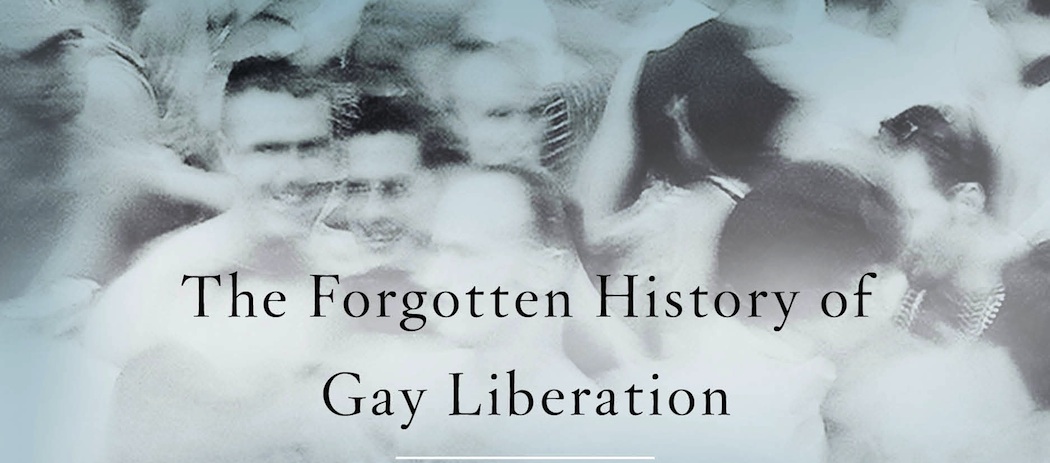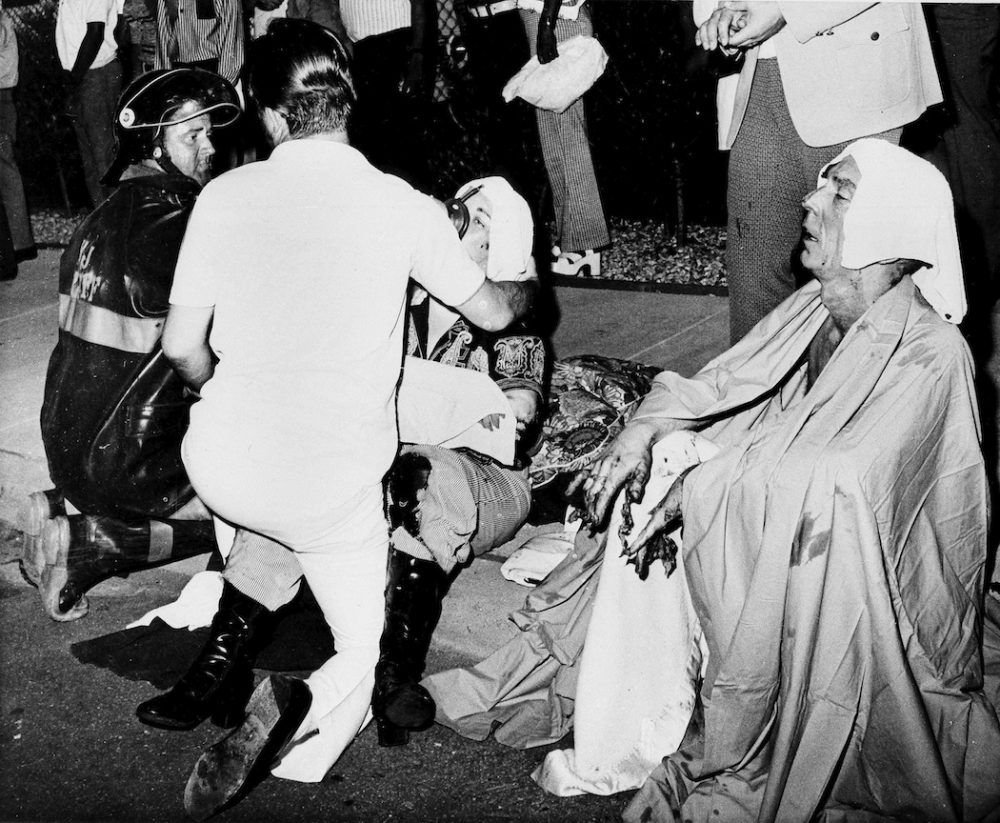Advertisement
'Stand By Me' — The History Of Gay Liberation Isn't What You Think It Is

The 1970s are frequently remembered as years of sexual licentiousness on the part of both heterosexuals and homosexuals. For the former, it is depicted in film, literature and television by key parties and swinging. For the latter, it is imagined as a series of nocturnal visits to what historian Jim Downs quotes a source as calling “the three Big B’s — the Bars, Beaches, and the Baths.”
In his new book "Stand by Me: The Forgotten History of Gay Liberation," Downs — a professor at Connecticut College who is currently a fellow at Harvard University — offers a new version, a recent history of which the effects are still unfolding.
Jim Downs will be at Harvard Book Store on Monday, March 21, at 7 p.m.
Generally dated from the June 28, 1969, raid on Greenwich Village’s Stonewall Inn, gay liberation in the United States has consisted of much more than a sense of freedom that allowed for an endless stream of anonymous lovers. Unfortunately, “An image of gay men as hypersexual began to be promoted in order to rationalize the spread of the [HIV] virus,” Downs writes.
This promoted image served to obscure the founding of scores of gay churches nationwide, the flourishing of gay publications (e.g., Boston's Fag Rag and Toronto's The Body Politic), the opening of the world’s first bookstore aimed at homosexual clientele (New York City’s Oscar Wilde Memorial Bookshop), and the partnering with African-Americans and women in the grapple for equal treatment and recognition in post-Stonewall, pre-AIDS North America.
Most readers of "Stand by Me" will be familiar with the Stonewall riot, which has been the subject of books, documentaries and movies. An equal number (if not all) will probably learn for the first time of the act of mass homicide that occurred at the Up Stairs Lounge in New Orleans on June 24, 1973. With 32 fatalities, this was what Downs calls “the largest massacre of gay people in American history.”

The site of this inferno was, indeed, a bar that catered to gay men and women. On this Sunday, however, the lounge was serving — as it had long been — as a place for members of the Metropolitan Community Church (MCC) to gather and worship.
The MCC had been founded in Los Angeles five years earlier by and for gay people. Therefore, the Up Stairs Lounge tragedy provided a link to not only the gay religious community, but also the incipient gay press. The Advocate, “the national gay newspaper” of the 1970s, “made it clear in its coverage of the fire that the arsonists attacked a gay religious community and the victims were people of faith.”
As Downs says in chapters on Jonathan Ned Katz’s pioneering book "Gay American History," the publishing of poetry by incarcerated homosexuals, and the emergence of the “macho clone,” the gay liberation movement did not emerge out of or operate in a vacuum.
For example, Katz had long been primarily interested in the struggles of African-Americans. “When he first began researching gay history,” Downs writes, “Katz encountered patterns similar to those discernible in the history of black people.” Furthermore, according to a member of the Gay Liberation Front, “we understood that racism was part of our fight, both for our sake as well as theirs.”
In addition to the larger themes of the book, "Stand by Me" is also revealing in its smaller details. For example, Downs explains that New York City was in 1970 not yet a particularly safe or accommodating place for homosexuals. Moreover, the first gay church was founded not in the Big Apple or San Francisco in the ‘70s, but in Atlanta in 1946 (two decades before the MCC). Finally, it was not uncommon for two people of the same gender to marry each other in churches that were willing to perform such ceremonies.

Downs by no means intends to erase sexuality as a significant factor in the story of gay liberation. Rather, he aims to establish that “it was not defining, as the received narrative has it.” Alas, to most chroniclers of the era, “it makes more sense to portray gay people at a disco than in a church pew.”
Reinterpreting a long-accepted account that one believes to be inaccurate, misleading or flat-out wrong is a noble aspiration for any historian. The more deeply entrenched the interpretation is, of course, the less likely scholars are to accept a modification thereof.
In "Stand by Me," Jim Downs achieves the impressive feat of illustrating that the willingness of homosexuals to be out — among one another, at least — was eased by more than just clubs, bars and bathhouses. Instead, it was frequently the case that, as the founder of the Metropolitan Community Church put it, “Homosexuals want to meet in low pressure, congenial settings as much as heterosexuals do.”